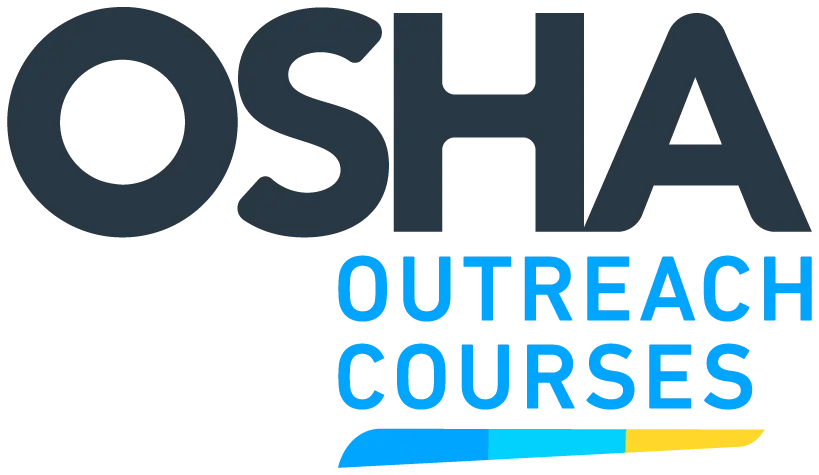Powered Industrial Trucks, Parts 1-7
Practice Test
Powered Industrial Trucks, Parts 1-7 Quiz
Complete this quiz to earn an exclusive Certificate of Completion from OSHAOutreachCourses.com. Read all the questions carefully and mark the right answers to earn the perfect score. Best of luck!
Total Questions: 5
Why Workers Choose Us
| features |  |
other providers |
|---|---|---|
| Instant Downloadable Certificate | ||
Free Study Guide

|
||
Discounts For Businesses

|
||
| No Hidden Cost | ||
Mobile Compatibility

|
||
Flexible Learning

|
Powered Industrial Trucks (Parts 1-7) Preview
Watch a short intro of the safety program.
Satisfied Customers
Learning Objectives
- Identify the different classes and types of powered industrial trucks and their appropriate applications.
- Describe the fuel types used in powered industrial trucks and the associated safety precautions.
- Demonstrate safe fueling, charging, and maintenance practices to prevent incidents and equipment failure.
- Apply proper techniques for loading, traveling, turning, and parking to maintain stability and prevent accidents.
Course Outline
Powered Industrial Trucks Part 1: Classes and Types
-
1. Introduction
- Welcome
- Important
- Introduction
- Learning Objectives
-
2. What Is a Powered Industrial Truck?
- What Is a Powered Industrial Truck?
- Names for Trucks
- Operation and Power
- Learning Activity: Lift Components
-
3. Classes of Powered Industrial Trucks
- Seven Classes
- Class 1: Electric Motor Rider Trucks
- Class 2: Electric Motor Narrow Aisle Trucks
- Class 3: Electric Motor Hand Trucks or Hand/Rider Trucks
- Knowledge Check: Classes 1-3
- Class 4: Internal Combustion Engine Trucks (Solid/Cushion Tires)
- Class 5: Internal Combustion Engine Trucks (Pneumatic Tires)
- Class 6: Electric and Internal Combustion Engine Tractors
- Class 7: Rough Terrain Forklift Trucks
- Knowledge Check: Classes 4-7
-
4. Types of Fuel
- Power Types
- Carbon Monoxide Poisoning
- Learning Activity: Power Types
- Knowledge Check: Type of Power
- Fuel-Powered Engines
-
5. Data Plates
- What Is a Data Plate?
- Identification
- Size
- Capacity and Additional Information
- Knowledge Check: Data Plates
- Feedback: Data Plates
-
6. Conclusion
- Summary
Powered Industrial Trucks Part 2: Pre-Operation Inspection
-
1. Introduction
- Welcome
- Inspection Overview
- Introduction
- Learning Objectives
-
2. Operator Training and Readiness
- Hands-On Training
- What Is Included in Hands-On Training?
- Proficiency Assessment
- Rest and Alertness
- Knowledge Check: Operator Readiness
-
3. Pre-Operation Inspection
- Pre-Operation (Visual) Inspection
- General Exterior
- Engine Compartment
- Knowledge Check: Debris
- Feedback: Debris
- Knowledge Check: Hose
- Feedback: Hose
- Knowledge Check: Battery
- Feedback: Battery
- Wheels, Rims and Tires
- Forks, Uprights and Attachments
- Knowledge Check: Forks, Lifts and Attachments
- Operator Controls
-
4. Conclusion
- Reminders
- Summary
Powered Industrial Trucks Part 3: Operational Inspection and Maintenance
-
1. Introduction
- Welcome
- Inspection Overview
- Introduction
- Learning Objectives
-
2. Operational Inspection
- Test in a Safe Area
- Entering the Truck
- Knowledge Check: Entering and Exiting the Truck
- Gauges
- Fuel and Power
- Warning Devices
- Knowledge Check: Alarms
- Feedback: Alarms
- Brake Systems
- Knowledge Check: Brake Systems
- Emergency Stop Mechanisms
- Steering and Controls
- Operation Inspection Failure
-
3. Maintenance and Follow-Up
- Deciding If a Truck Needs Repairs
- Transporting Trucks for Repairs
- Knowledge Check: Who Performs Repairs?
- Feedback: Who Performs Repairs?
- Scheduled Maintenance
-
4. Conclusion
- Summary
Powered Industrial Trucks Part 4: Fueling and Charging
-
1. Introduction
- Welcome
- Introduction
- Learning Objectives
-
2. General Safety
- Power Types
- Designated Areas
- Fire Safety in Designated Areas
- Knowledge Check: General Safety
-
3. Liquid Fueling
- Safety Hazards
- Storage and Spills
- Health Hazards
- Refueling
- Knowledge Check: Fueling
-
4. Gas Cylinder Fueling
- Safety Hazards
- General Guidelines
- Knowledge Check: Propane Fueling
-
5. Charging Batteries
- Safety Hazards
- Personal Protective Equipment (PPE)
- Removing and Replacing Batteries
- Equipment for Lifting Batteries
- Charging Batteries
- Battery Acid Exposure
- Knowledge Check: Charging Batteries
-
6. Conclusion
- Summary
Powered Industrial Trucks Part 5: Preventing Incidents
-
1. Introduction
- Welcome
- Introduction
- Learning Objectives
-
2. Loading and Capacity
- General Stability Principles
- Capacity
- Know Your Truck
- Load Placement
- Learning Activity: Load Height, Speed and Stability
-
3. Obstructions
- Obstructions
- Look in the Direction You Are Moving
- Knowledge Check: What Do You Think?
- Feedback: What Do You Think?
-
4. Speed and Braking
- General Stability Principles
- Speed and Braking
- Stopping Distance
- Knowledge Check: Speed and Braking
-
5. Turning
- General Stability Principles
- Turning
- Best Practices for Turning
- Knowledge Check: Turning
-
6. Parking
- Where to Park
- How to Park
- After You Park
- Knowledge Check: Parking
-
7. Tip-Over Emergencies
- Reminder
- Counterbalanced Trucks with Seated Operators
- Without Overhead Protective Structures
- Knowledge Check: Tip-Over Emergencies
-
8. Conclusion
- Review of General Stability Principles
- Summary
Powered Industrial Trucks Part 6: Picking Up and Placing Loads
-
1. Introduction
- Welcome
- Introduction
- Learning Objectives
-
2. Picking Up Loads
- Picking Up a Load
- Loading
- For Trucks that Lift
- Knowledge Check: Picking Up Loads
-
3. Traveling and Operating
- Staying Safe During Operations
- Passengers
- Traveling
- General Safety
- Knowledge Check: Traveling and Operating
-
4. Placing Loads
- Placing Loads
- Avoid Blocking Equipment and Access
- Placing a Lifted Load
- Knowledge Check: Placing Loads
-
5. Conclusion
- Summary
Powered Industrial Trucks Part 7: Loading Dock Operations
-
1. Introduction
- Welcome
- Introduction
- Learning Objectives
-
2. Surfaces, Light and Edges
- Outdoor Surfaces
- Indoor Surfaces
- Light
- Loading Docks and Ramps
- Knowledge Check: Surfaces, Light and Edges
-
3. Trailers, Railcars and Elevators
- Verify Capacity and Size
- Brakes and Chocking Wheels
- Knowledge Check: Trailers and Railcars
- Opening Doors
- Carbon Monoxide Poisoning in Loading Dock Areas
- Entering and Exiting Trailers, Railcars and Elevators
- Elevators
- Knowledge Check: Trailers, Railcars and Elevators
-
4. Conclusion
- Summary
Training Process
There are no prerequisites for this course. Trainees only need access to a computer and a stable internet connection to complete the training successfully.
Group Discount for Corporate Accounts

VIDEO TESTIMONIAL
FAQ
Will I have to give an exam at the end of the course?
What is meant by "powered industrial trucks"?
What are some risks associated with forklifts?
When will I get the certificate of completion?
Is this training specific to one type of forklift or does it cover all classes?
Is this program based on OSHA standards?
Job Aid Powered Industrial Trucks, Parts 1-7 PDF
Join our mailing list
Get announcements, industry updates and promotional offers.
17350 TX-249 Ste 220 19204, Houston, TX 77064, United States

